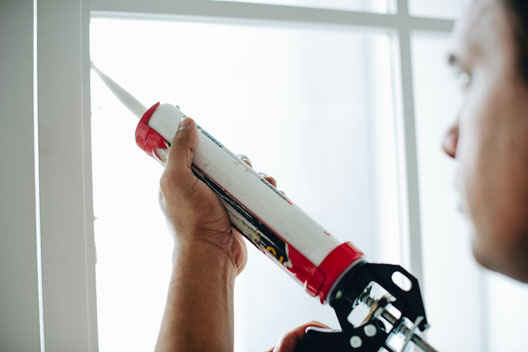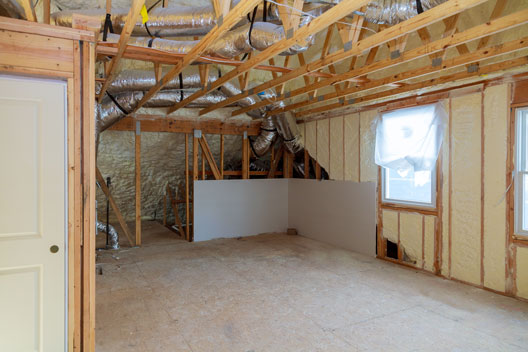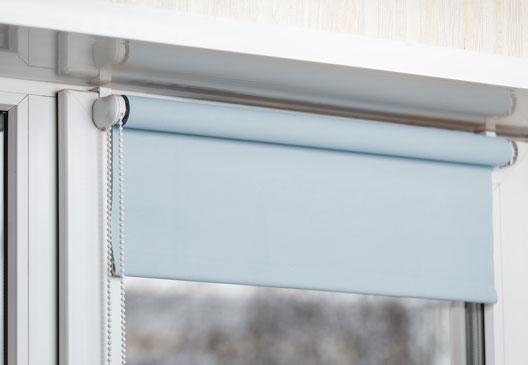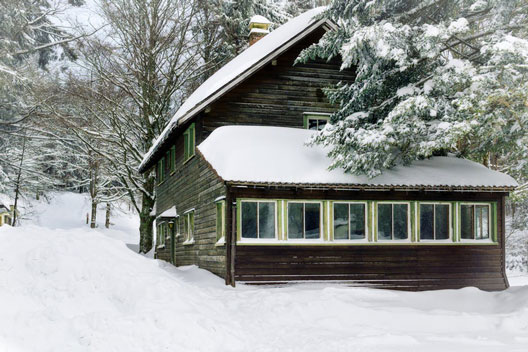The telltale signs of winter have begun and it’s probably time to winterize your windows and doors. First, you have to scrape your windshield before the morning commute. Then you notice frost beginning to form on the inside of your house windows.
If you have frost, or worse yet, ice, forming on the inside of your windows, you need to understand how to winterize windows and doors in your home.
Keep reading to learn how to keep the cold outside by winterizing your home, starting with your windows and doors.
How to Winterize Windows Quickly
Sometimes getting new exterior doors is a necessity or your best bet to a warmer home is new windows. But not everyone can afford to replace all windows and doors in the home this time of year, just before Christmas.
With the average low in Ontario dipping to minus seven degrees Celcius in January, winterized windows just make sense.
You can take some basic steps, though, to winterize your windows and keep your home warm.
1. Caulking
Sometimes you just need a little caulk to keep out the draft. A few tubes can make a big difference.
Before you begin to squeeze out a line of caulk, break out your razor blade. Scrape off all the old caul and peeling paint around the exterior of the window. Make sure you have a clean, dry surface for your new caulk.

Use a bucket of soapy water to clean the surface, and then dry it thoroughly. Caulk will stick best to a smooth, dry surface.
Then squeeze out a bead of exterior-grad caulk. Follow the outside perimeter of the windows. Create a single-line seal between the window frame and siding.
If you notice big gaps between the window frame and the siding, you may need something more substantial than just caulk. At this point, you’ll need to consider some spray foam to fill the gaps. Once you’ve filled the hole, keep on caulking.
2. Check Your Glass
As you’re preparing to caulk your windows, examine the glass on the windows carefully. If you have broken glass, no amount of caulk will keep the cold out. Replace the glass.
3. Insulate
All of your walls have insulation to keep the heat out. Insulating the frame of your window just makes sense to keep the heat out as well.
You can use low-expansion spray foam made specifically for windows. You can certainly use batting insulation as well but do so carefully. Do not stuff it into the spaces tightly.

If you have a gap between the window and the framing, spray foam is your best friend. You spray it, and it expands in the space and fills it.
If you overfill the space, just use a razor blade to trim off the excess once it dries. Otherwise, your window will look like it has a mushroom growing from beneath its surface.
4. Weatherstripping
Weatherstripping also works well to winterize your windows and doors.
Weatherstripping comes in a variety of shapes and sizes. V-shaped or tension-seal weather stripping works well for the side channels of double-hung windows.
Pulley seals can block the air that streams through the holes where cords go into the window frames.
Whatever you do, read the manufacturer’s instructions before applying the weatherstripping. Because it comes in so many varieties, you must assume that no weatherstripping is the same.
One thing you can count on: you most likely will need warmer weather before you apply it. Most weatherstripping requires a temperature of at least 10 degrees Celsius for a successful application.
So start weatherstripping before the mercury drops anymore.
5. Bubblewrap
If you’re in a hurry and need something right now, bubble wrap can work for a quick fix. It will not work for the entire winter, but it can get you by for a day or two until you can buy more durable materials.
You can squeeze the bubble wrap into the holes between the window and frame, wedging it in with a butter knife. You can also apply it to your window pain itself, with the bubble side toward the exterior of the window. Spray the window with a spritz of water and then apply the bubble wrap.
You should not use bubble wrap for the duration of the winter. But if you live in a place that has a cold snap here and there, it works.
6. Cover Basement Window Wells
To keep your basement warm, invest in window covers or thick blinds. They can cost as little as $20 and can increase your energy efficiency.
Window well covers will trap heat in the basement and prevent drafts from coming into your basement windows. If you have a bunch of snow, they will prevent the snow from accumulating in your window well.

This will increase your chances of a dry basement in the spring once everything thaws outside.
7. Specialized Window Fashion
Winterization does not have to look ugly.
Window fashion designers understand this. They’ve developed both thermal window fashions as well as cellular shades.
You can purchase heavily, thermally lined drapes that block breezes. The drapes cost more than the other solutions mentioned so far, but they look nice. You can use them repeatedly without having to re-install them annually.
Year-round cellular shades will also keep the heat in and the cold out. You will have to custom order them to fit your windows.
Specialized window fashion will give you a fancier way to keep the heat in and the utility bill low. You can justify their cost by figuring out how much you will save on this bill monthly.
8. Window Insulator Kits
Many people believe in window insulator kits. These kits come with sheets of plastic, adhesive strips, and instructions.
First, you line the perimeter of your window on the inside of your house with the adhesive strip. Then you cut the plastic to fit over your window. You seal the edges of the plastic to the adhesive strip.
Then you typically use a hairdryer. You blow warm air on the plastic to shrink it so that it fits snugly over the window. If you apply the insulator kit correctly, you will end up with a warmer room and just as much light as if you did not have the kit.
Keep Warm with Winterized Windows
Now that you know how to winterize windows, you can make a decision on which method fits your home and budget best.

For all of your home design needs or a quote on new windows or doors contact us.

Share This Article
Choose Your Platform: Facebook Twitter Google Plus Linkedin